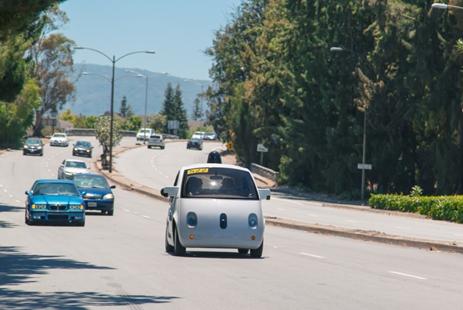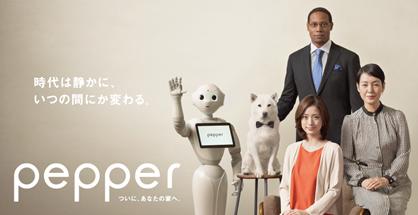A Look at the Internet of Things and AI Development from Productivity 4.0
Author/BaoMin Zhang [Issue Date: 2015/8/31]
Preface
In recent years, with the rapid development of networks, the omnipresence of technology devices and now sensors are slowly entering our daily lives. For these reasons the Internet of Things is ever increasing in popularity, but there are more factors influencing its rise. In tandem with cloud computing virtualization technology and the rise of the Service-oriented business model — making the computer's computing resources changes in form of service — along with direct access via the Internet, the trend has been a reshaping of the information industry's supply chain. Along with the rapid popularization of sensors, collection of sensor data that is stored in cloud services and then analized using big data tools is leading to a revolution within the industry and a paradigm shift in data driven services that will be leading the future of technology innovation and become a new business model for the future.
Internet of Things and Artificial Intelligence
Internet of Things is an information carrier based on the Internet and traditional telecommunications networks. It allows independent access to and achieves interoperability with any ordinary physical objects. Internet of Things is generally a wireless network. People have about one to five thousand objects, so Internet of Things could include five-hundred trillion to one-thousand trillion objects. Using electronic tags, real-world physical objects become part of the Internet of Things. This will produce a huge amount of data because smart phones, wearable equipment, automobiles, housing, consumer electronics products, medical equipment, factory equipment and other urban infrastructure can all become part of it, in other words, endpoints (i.e., objects).
Conversely, since 2011 when the IBM supercomputer Watson joined the champion ranks of winners on the famous American trivia television program "Jeopardy," besting two top Jeopardy human players, artificial intelligence has been getting attention once again. Watson has a natural language understanding ability, but also has semantic analysis capability that helps it distinguish between irony, puns and other language constructs. This is an important evolution of “Machine Learning” technology which can form a basis for artificial intelligence. "Machine Learning" involves constructing models from huge data sets, defining various parameters, constructing executable program models, using test data (also called Training Data) to adjust and optimize the parameters, and finally waiting for training samples to achieve a desired status. When the parameter definitions are ready, the program can make predictions. Traditional Machine Learning algorithms aren't able to manage as tremendous amounts of data stack up. We need a method where manual intervention is not necessary and this is what is known as the deep learning field.
Regarding Internet of Things, first devices must be ready to connect, however devices linked to people via a connected network is insufficient. Artificial intelligence is very important and the key is having adequate intelligence and handling huge amounts of linked data so as to add a high level of value without excessive human intervention.

< Figure 1> IOT x Machine Learning (from Microsoft)
Internet of Things and Artificial Intelligence Applications
Let us to give two examples from everyday life to explain the application of Internet of Things and artificial intelligence.
First let's look at Google's unmanned vehicle. Continuously collecting precise data about the vehicle and its environment via sensors installed around the vehicle, the car's processor provides computational analysis and then controls the car according to those results. Results are also sent to a central database where they are collected with those from other unmanned vehicles. From the central cloud, each unmanned vehicle continuously updates its own database, learning about any variety of unexpected situations and then making a best response.

< Figure 2> Google's unmanned vehicle (from Google)
Another example, developed by Japan's SoftBank, is the intelligent robot named Pepper. Except for the machine's sensor, voice recognition, also equipped with Engine Emotion's Emotional discrimination system and cloud computing service " Cocoro SB "which is built by SoftBank for the sake of the engine, so it can apperceive users' mood, and taking appropriate action. According to the cloud computing's self-learning ability for mood recognition, it can function as the medical care personnel, a children's nanny, elderly care or as a business clerk.

< Figure 3> SoftBank Pepper (from SoftBank)
In addition to these experimental tests, applications in the industry also include predictive maintenance and quick remote diagnosis for factory equipment. Collecting workplace data and the associated data utilization are further uses, say for exmaple in the agriculture sector, combined with climate and geography data.
For example, ThyssenKrupp Elevator is responsible for maintenance of 1,100,000 of the world's elevators. They use the Internet of Things, connecting the thousands of sensors and systems that will monitor everything from the motor temperature to the pivot alignment, the speed of the elevator car and the operation of the elevator door. All collected in the ThyssenKrupp cloud via Microsoft Azure machine learning services, the data provided by the elevators will be sent used within dynamic predictive models and then on computer-based dashboards and mobile devices, results are displayed. In this way, checking of the key performance indicators in real-time, and depending on predictive maintenance and fast remote diagnostics to improve reliability becomes a true reality. Now, the elevator itself can teach technicians how to carry out maintenance work, so it can greatly improve the site's efficiency and the elevator's run time will be increased significantly.
In another example, Permanente Kaiser is providing clinicians with more efficient tools by using mobile technology to provide remote monitoring options for patients at home. This is improving the patient's participation in their healthcare and their own convenience. They are testing connected medical devices like those that monitor blood pressure, blood glucose and other wearable "wristband" monitors. Using a smart phone as an operational gateway device, it's responsible for sending data to the cloud, so as to integrate with existing analysis and data visualization programs which are available in the Permanente Kaiser data center. In real-time clinicians can access the data through a central instrument panel and have a more comprehensive understanding of disease, health, and patient activity and through real-time remote monitoring for vital signs and automatic alarm functions. Care of patients and improve their safety is significantly enhanced.
Future Trends
Early research in the study of artificial intelligence tried to imitate human thinking using step-by-step inference and logical reasoning in terms of playing board games. In the 1980s and 1990s, researchers went a step further using the concept of probability and economics in their researching of artificial intelligence in order to help deal with uncertain or incomplete information. For even more difficult problems that required large amounts of computing resources, this "combinatorial explosion" needed an astronomical amount of memory and computation time and the investment in hardware devices capable of delivering this was expensive and required users to have greater technology skills.
With the development of cloud computing, big data, and the Internet of Things, researching artificial intelligence has became more commercialized. In recent years, we've seen machine vision system used for sophisticated detection, intelligent robot systems used for assembly operations, and now natural language interfaces are not only found on micro computers and a variety of expert system, but also are now widely used in smart home systems, intelligent buildings, car systems and other equipment. To a certain degree, these things were already employing technologies like the Internet of things, big data analysis, artificial intelligence machine learning, and natural language processing, but this was different from traditional artificial intelligence of the past. Now people no longer feel that a product or system belongs to the realm of R&D laboratories. Now, these technologies are widely used in daily life situations like those in the home, medical care, accounting, forecasting epidemics and crime, and other fields.
Opportunities for Enterprises
Many people believe that individual enterprises, even small ones, find it very difficult and costly to use artificial intelligence technology in their business development, but increasingly tools such as Microsoft Azure, Amazon AWS, IBM Watson Analytics, and others have been providing cloud computing services and helping development teams focus on collecting information, solving the problems at hand, and learning from the outcome. The work of other operations will depend on the machine learning platform, so the machine learning technology will become easier to use and the cost will decrease. For these reasons, the Industrial Development Bureau has proposed Productivity 4.0, through the Internet of Things and artificial intelligence, it will alieviate an industrial crisis by improving productivity of industries accross the board, including those that make some of today's most most expensive components such as network gear, and memory modules. Machine learning technologies and other resources that will be provided by the cloud industry, without additional investment in expensive hardware devices, by using the IoT and artificial intelligence, we can develop new business opportunities.
References
1. Capturing New Opportunities from Internet of Things (Author: Su Mengzong (Stephen Su) IEK Industry Intelligence Network; From: Taiwan Electrical and Electronic Guild)
2. From Dark Blue to Watson, Computer is no Longer Compared with Human Intelligence (Author: Xuewen,Liu; From: ifar)
3. Wikipedia / Internet of Things
4. Microsoft IoT- Building your Internet of Things
